The Lunge is one of the best glute-building exercises you can perform.
It is simple to do and can be done any time, any place.
It involves balance and coordination, which is very useful for sports as well as muscle development. The dumbbell version of the Lunge is the easiest to start with. You may be using other forms of resistance rather than dumbbells like two milk jugs or something.
Hold two dumbbells in your hands by your sides (you can also do this exercise without any weight the first time you try it - in fact, I recommend it).
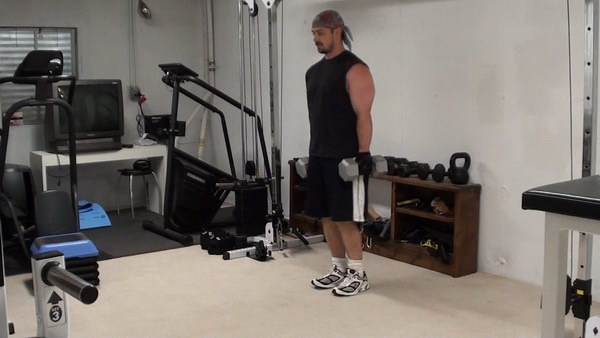
Step forward with one leg about 2 to 3 feet or so, with your heel down first...you'll have to determine the step distance that feels comfortable to you. It should be a medium step...not way far out but not close in.
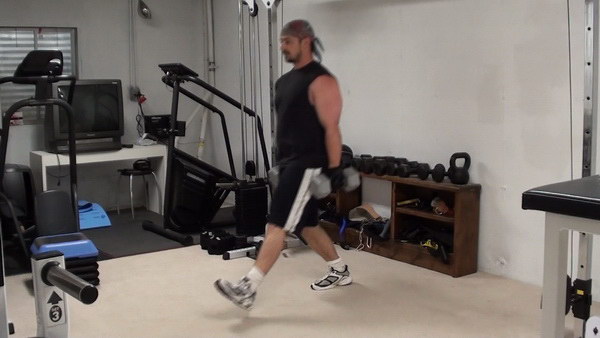
Once your front foot comes down, bend your knees and come down into what's called the Lunge position. Your back knee should touch the ground to ensure you're getting a full range of motion and keep your torso vertical as you come down. This will help keep tension on the glutes and less on the knees.
Also, try to visualize "sitting back" as you're coming down into the lunge position. This will also help keep the tension focused on the glutes.
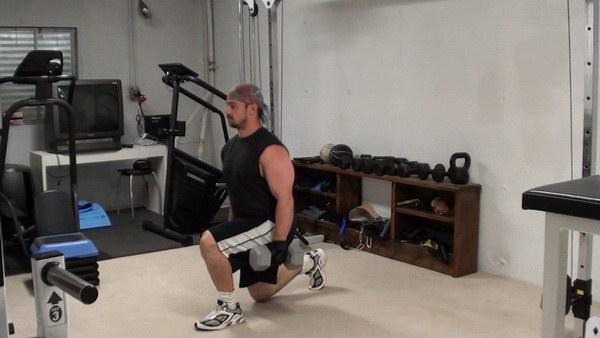
Push up and back to a full standing position with both feet together and repeat with the other leg or do all the reps with one leg then switch.
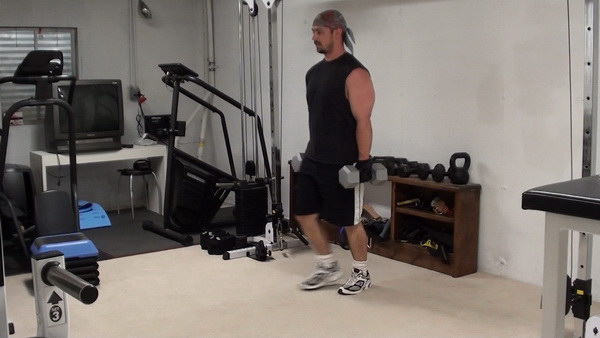
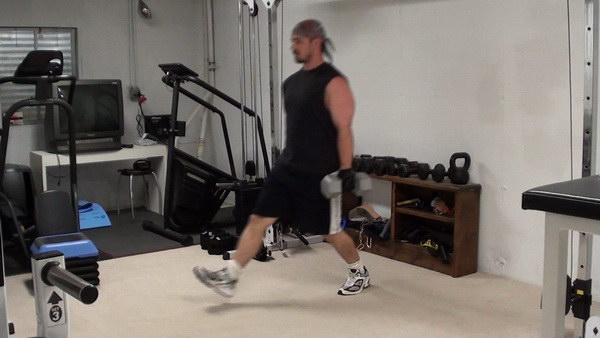
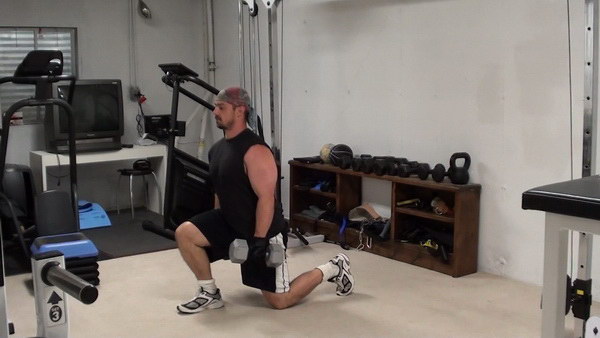
There are several other variations of the basic lunge you can try. This next one has you stepping out to the side at an angle then lunging. This hits the gluteus medius and minimus (the smaller muscles on the sides of the butt).
When you do this, make sure and keep your torso facing forward as you step to the side. If you turn your torso to the same angle then you're just doing a regular lunge but turning your body to do it.
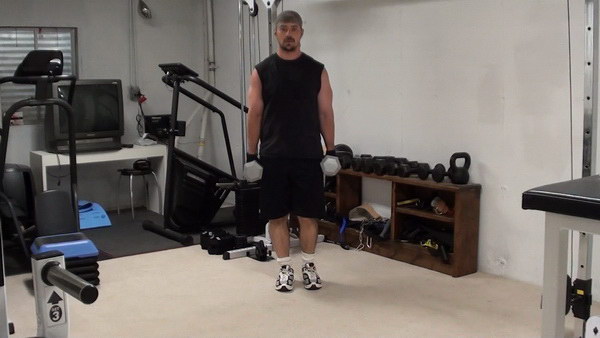
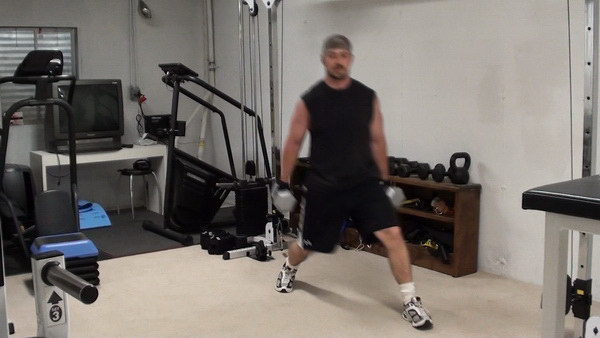
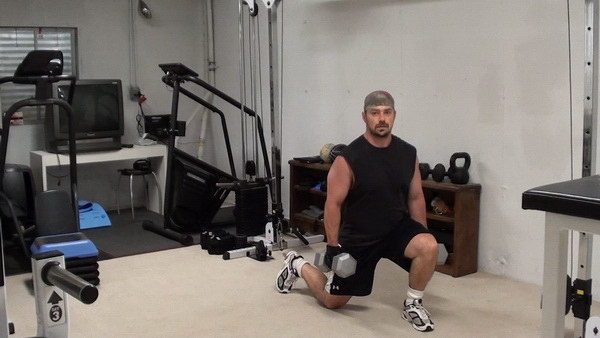
Then step down to the other side.
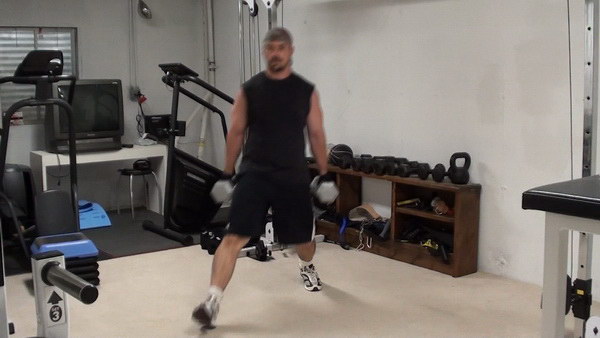
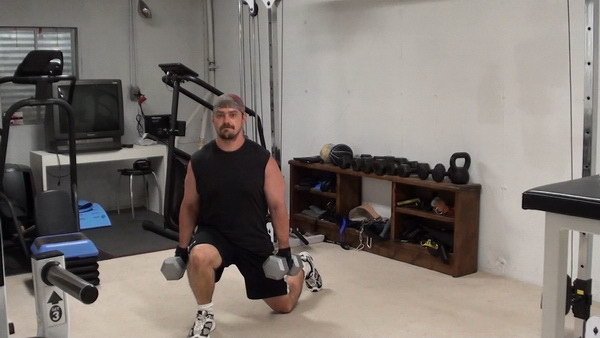
The next version is a cross-over lunge. You're going to step forward across your body and into the lunge position.
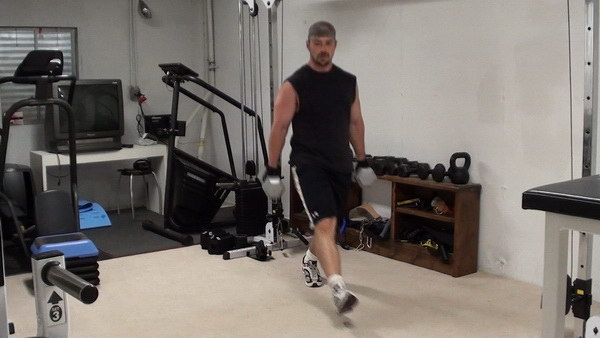
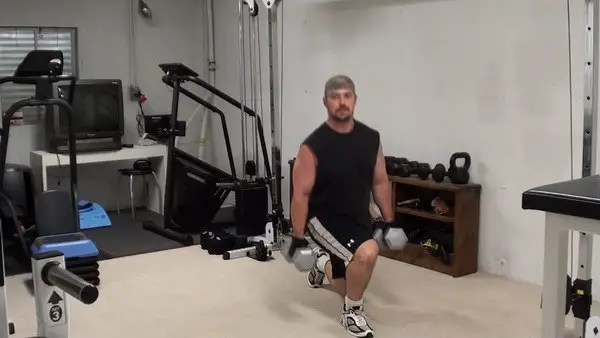
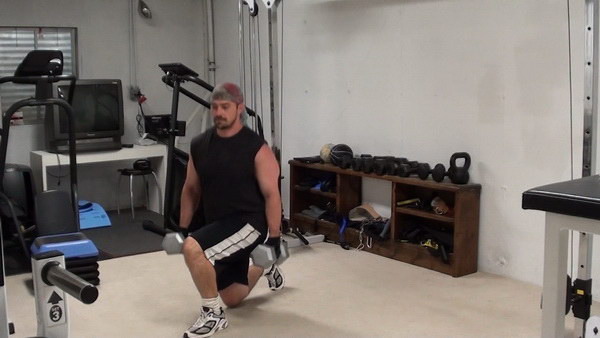
Finally, if you would like to get a bit more range of motion when doing Lunges, you can do these on a Step platform or other elevated surface (that's solid and stable).
The movement is exactly the same only you'll be stepping forward onto that elevated surface. This gives you a few inches more range of motion before your back knee touches the ground and stops you.
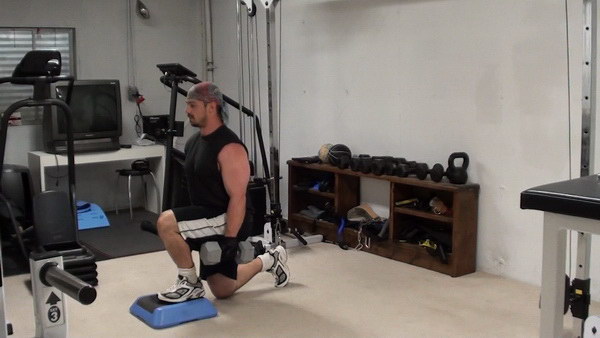
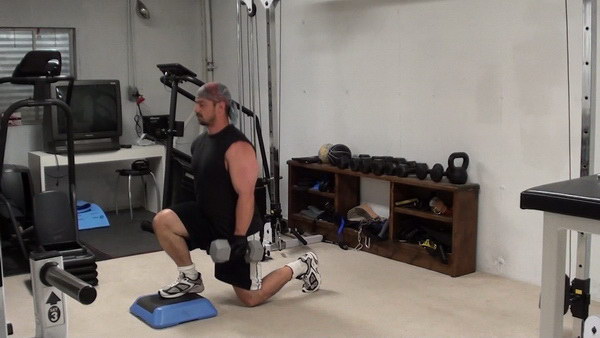
Two Bench Lunges
For even greater range of motion, you can stand on two benches (or a bench and a chair, my case). This allows you to get your back knee down pretty much as far as you are physically able to get it.
I recommend performing this one as a "split squat" style of lunge where you keep your feet set in the same position and don't step forward (more on this below).
The Split Squat:
You can also do a variation of this exercise without coming up to a full standing position each time - this is called a Split Squat. Not only is this more efficient for keeping tension on the muscles, stepping forward can stress your knee if you step forward too heavily. Simply do all your reps on one leg then switch legs and do all your reps on the other leg.
Common Errors:
1. Leaning too far forward on the way down
Some leaning forward is actually ok, as long as you don't lean so far forward that it puts your balance off.
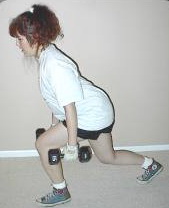
2. Not placing the feet slightly apart
Having your feet in a straight line invites balance problems. Keep them a little apart (separated horizontally so that they're not directly in line with each other) to widen your base of support.
3. Dropping down too quickly
Dropping quickly not only takes tension off the legs, it can create balance problems when you try to reverse direction. It can also increase the stress on your knees.
4. Hitting your back knee on the floor
This takes the tension off the muscles, reducing the effectiveness of the exercise. Touching the ground with it is ok, just don't bang it against the floor.
Tricks:
1. Separate your feet horizontally
Don't place both your feet in a straight line. Keep them horizontally separated by about six inches to keep your balance. Doing this increases your base of support and makes your body more stable.
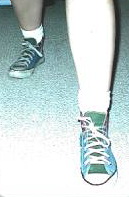
To get into position try this technique.
-
Stand with both feet side-by-side.
-
Now take a small step of about six inches to one side.
-
This is horizontal separation.
-
Step forward maintaining that horizontal separation.
2. Blocking your upper body
If you have a problem with your upper body drifting too far forward during the movement, use a bar or table to stop your forward progress. Put your front foot heel directly under the bar or table edge and a lunge in that position. The edge of the bar or table will prevent you from leaning forward by blocking your body...your stomach will run into it before you can lean forward.
3. Hang on
When first starting Lunges, hang onto something solid to help your balance.
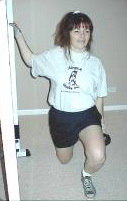
Use no weight. Gradually work your way up to holding on with only one hand then hold a dumbbell while holding on with one hand then do freestanding. If you use only one dumbbell, alternate the side you hold it on to stress the muscles differently.
4. Flat shoes
Wear flat-soled shoes when doing Lunges (such as tennis or other court shoes). This will help with your balance.
With running shoes, you have half an inch or more of cushioning upon which to destabilize yourself. Also, be aware if you perform lunges on thick carpet that this will greatly increase the instability of the exercise. A solid surface is your best bet.
If you find regular Lunges to be tough on your knees, try Incline Dumbbell Lunges instead.
As well, if you do have knee issues, you may want to learn more about knee sleeves for support.
![]()
More From Fitstep.com
Share This Page...
---
Home -> Exercise Library -> Glute Exercises -> Lunges



